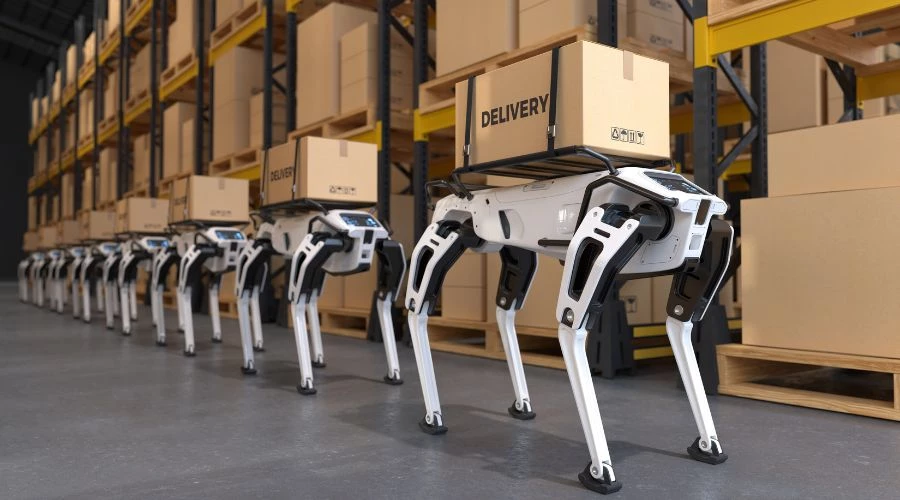
With the introduction of technology and automation, warehouse operations have advanced significantly from the era of manual labor. These days, warehouses may optimize their operations in ways that were previously not feasible because of breakthroughs in robotics. Robotics are becoming a crucial component of contemporary warehouse operations because of the efficiency gains, cost savings, and safety enhancements they have brought to the industry. In this blog, we'll talk about the most recent developments in warehouse robotics and how they're streamlining operations for the future.
The most recent developments in warehouse robotics are:
Automated Guided Vehicles (AGVs): Self-driving cars that can move goods around a warehouse are called automated guided vehicles (AGVs). They can move around the warehouse by avoiding barriers and taking predetermined routes because they are outfitted with sensors and mapping technologies. AGVs may work alongside humans and are configured to carry high loads, which lowers the possibility of accidents and injuries. Additionally, they can work nonstop, increasing productivity and lowering labor expenses.
Collaborative Robots (Cobots): Cobots, often referred to as collaborative robots, are intended to aid human workers by helping with repetitive, physically demanding, or hazardous jobs. Cobots are secure because they have sensors and cameras that enable them to recognize and react to human presence. They are capable of a variety of operations, including picking, packaging, sorting, and palletizing. They can help to lower labor costs, boost output, and enhance warehouse safety.
Autonomous Mobile Robots (AMR): Robots that are self-driving and able to travel freely across a warehouse while dodging obstacles and avoiding collisions are known as autonomous mobile robots (AMRs). They have sensors and cameras that enable them to map their environment and sense their surroundings. AMRs can be programmed to carry out several activities, including inventory management, picking, and packing. They can collaborate with human workers, boosting output and lowering the chance of accidents and injuries.
Robotic Arms: Robotic arms can pick up and pack items, lift and move large objects, and perform a variety of other jobs. They are safe to work with because they have sensors and cameras that let them recognize and react to their surroundings. Palletizing, depalletizing, and sorting are just a few of the operations that robotic arms can be trained to carry out. Additionally, they can work nonstop, increasing productivity and lowering labor expenses.
Warehouse Management Systems: Software applications known as warehouse management systems (WMS) aid in managing warehouse operations, including order fulfillment and inventory control. Robotics and other automation technologies can be linked with WMS to increase productivity and accuracy in the warehouse. They can also offer real-time data and analytics, enabling warehouse managers to decide on their operations with knowledge.
Conclusion
The way warehouses function is changing as a result of improvements in warehouse robotics, which are improving productivity, accuracy, and cost-cutting. Warehouse robotics will certainly continue to gain in acceptance and application as e-commerce and the need for quicker and more effective delivery expand. 13 SQFT can provide you with a platform to fulfill all your warehouse robotics requirements most efficiently and reliably. Check out the automation category on our webpage for your requirements.
POSTED BY
Ishika Adhana
Digital Marketing Executive